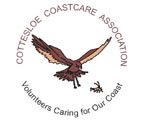When a sedge is a nut and a nut is a drupe
On
For example, it is of vital importance that the seed is collected at precisely the right time. To maximise its germination chances, it has to be mature, i.e. the right colour and the right size. That sounds easy, but can be difficult – one day it’s still too green, the next day it has been dispersed by the wind! So you really have to watch your plants and get the seeds before they’re gone.
Cottesloe Coastcare has a collector’s licence and there are ‘best practice’ rules:
collect
- from several plants
- from middle and upper branches,
- from healthy plants.
don’t
- damage plants
- take more than 20% from any one plant
- mix different seeds in your bag
- collect when it’s wet
- use plastic bags
Our collection technique – ‘hand-picking’ – is slow and labour intensive, but it yields relatively clean seeds with little debris [leaves, sticks]. Some plants make it easier for us than others – my favourite is the prickle lily [Aganthocarpus preissii] whose seeds are lovely golden balls, easy to see, easy to pick and staying on the plant long enough for us to get them. It is called a ‘capsule’ type, i.e. a dry, dehiscent [= splits open when mature] fruit.
“Splits open when mature” is a fiendish feature of the ‘capsule’ types that can make seed collecting so difficult. Especially when the individual seeds are tiny, as they often are. One of the most reticent plants to surrender its seeds is the cottonhead [Conostylis candicans]. Its profuse yellow flowers were particularly spectacular at
[left] flowering [right] reluctantly relinquishing seeds
and the native wisteria [Hardenbergia comptoniana] that has been flowering so prettily in July and August [see Robyn’s postings!]. Indehiscent types, i.e. those that do not split, are ‘drupes’, berries and nuts.
I had never heard of a ‘drupe’ = a fruit consisting of an outer layer and a hard inner shell enclosing a single seed. I learned that our quandong [Santalum acuminatum], the poverty bush [Eremophila glabra] and, surprisingly, almonds belong to this group. So, an almond is not a nut [= ‘a dry indehiscent fruit with a covering over the seed’], whereas our presently so profusely blooming blue thick-leaved fan-flower [Scaevola crassifolia, see Robyn’s last posting!] and our coast sword-sedge [Lepidosperma gladiatum] are!
No surprises with berries, however. They are what we expect, i.e. succulent indehiscent fruit with the seed embedded in the flesh. In our dunes, the most obvious ‘berry’ species is the berry saltbush [Rhagodia baccata] – its tiny seeds are surrounded by colourful red flesh that needs to be dried or washed off in the germination processing. It grows very slowly from seeds – for faster results we take cuttings.
Since we revegetate our dunes in Cottesloe with ‘local provenance’ species, it is necessary to collect seeds and take cuttings from our existing plants. The more we know about the best ways of doing this, the more viable our collections will be, resulting in high germination rates at propagation time. We are grateful to our Coastcare Officer, Dr Christine Lamont, for organising the course and for making it possible for us to attend. It has been an enriching experience.
[Photos taken by Christine Lamont, Sue Freeth and Robyn Benken]




